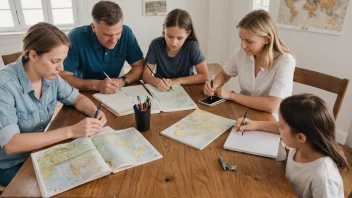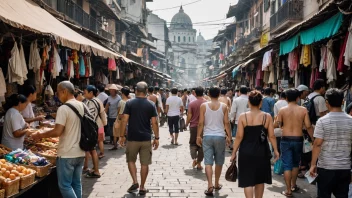Introduction
Traveling solo is an exciting adventure, but it can also be daunting when it comes to budgeting. This article will guide you through the essential steps to create a practical budget for your solo travels, ensuring you make the most of your experience without breaking the bank. You'll learn how to estimate your expenses, identify money-saving tips, and plan for unexpected costs. Let's dive into the world of solo travel budgeting!
Step 1: Determine Your Travel Destination
Your first step in budgeting for solo travel is to decide where you want to go. Different destinations can vary greatly in terms of cost. Research the following:
- Accommodation costs: Look for the average price of hostels, hotels, or guesthouses in your chosen destination.
- Food expenses: Investigate the costs of dining out and groceries.
- Transportation: Consider the cost of local transport, such as buses, trains, or taxis.
- Activities and attractions: Look for entry fees and costs associated with tours or experiences.
Step 2: Estimate Your Overall Trip Duration
Knowing how long you plan to travel will help you determine your daily budget. Consider the following:
- Length of stay: Decide how many days you will be traveling.
- Daily expenses: Multiply your estimated daily cost by the number of days to get a base figure.
Step 3: Create a Daily Budget
Now that you have a rough idea of your overall expenses, break them down into a daily budget:
- Accommodation: Allocate funds for where you will stay each night.
- Food: Determine how much you will spend on meals each day.
- Transportation: Include local transport costs for getting around.
- Activities: Set aside money for excursions, tours, or tickets to attractions.
- Miscellaneous: Don’t forget about items like snacks, souvenirs, and unexpected costs.
Step 4: Look for Money-Saving Tips
Traveling solo doesn't mean you have to spend a fortune. Here are some tips to save money:
- Travel during the off-peak season: Prices for flights and accommodation tend to be lower when fewer tourists are around.
- Consider alternative accommodations: Instead of hotels, look into hostels, Airbnb, or couchsurfing to save money.
- Cook your meals: If possible, use kitchen facilities in your accommodation to prepare your own food.
- Use public transportation: It’s usually much cheaper than taxis or rideshares.
- Look for free activities: Research free walking tours, parks, and museums with free entry days.
Step 5: Prepare for Unexpected Expenses
No matter how carefully you plan, unexpected costs can arise. Here’s how to prepare:
- Emergency fund: Set aside a small amount of your budget for emergencies.
- Travel insurance: Consider purchasing travel insurance to cover unforeseen medical expenses or trip cancellations.
- Monitor your spending: Keep track of your daily expenses to ensure you stay within your budget.
Step 6: Review and Adjust Your Budget
Before you leave, review your budget. Make adjustments based on your priorities and preferences:
- Reevaluate your daily budget: If you find certain categories are too high, see where you can cut back.
- Compare your estimates with actual costs: After your trip, analyze your spending to improve your budgeting skills for future travels.
Conclusion
Budgeting for solo travel may seem overwhelming, but with these steps, you can create a plan that allows you to explore the world while keeping your finances in check. By determining your destination costs, estimating your trip duration, establishing a daily budget, finding money-saving tips, preparing for unexpected expenses, and regularly reviewing your budget, you can ensure that your solo travel experience is both enjoyable and financially responsible. Happy travels!






